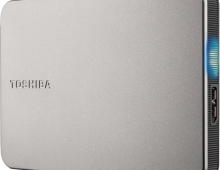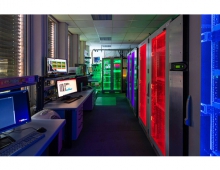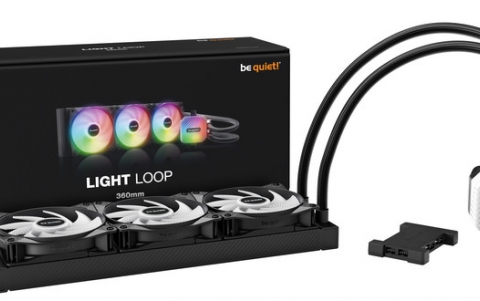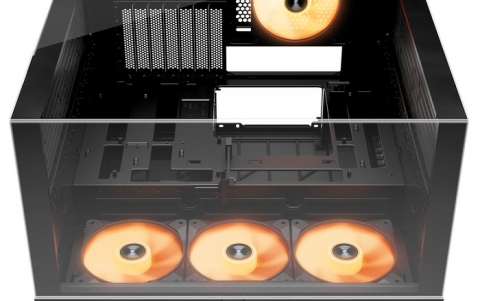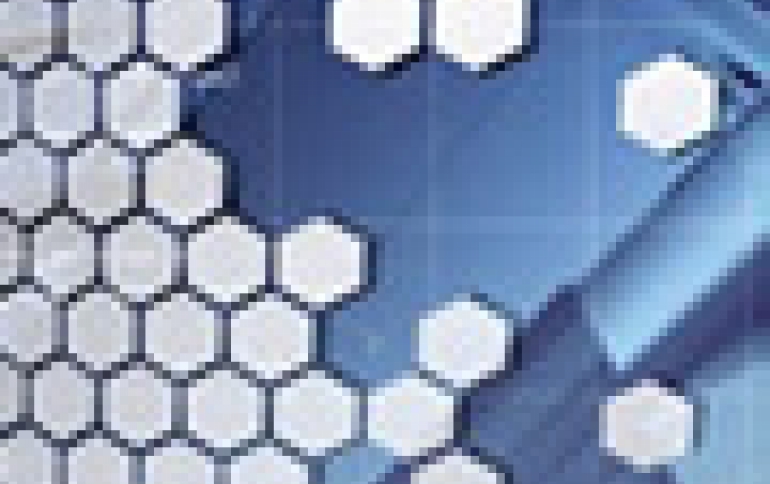
Toshiba Claims 1Mbps Quantum Cryptography Bit Rate
Researchers at the Cambridge Research Lab of Toshiba Research Europe have increased the bit rate of quantum key distribution (QKD) more than hundred-fold. The breakthrough will allow QKD to be applied to optical fibre networks connecting many users.
Quantum Key Distribution (QKD) is a new technology for distributing secret digital keys on optical fibre. Unlike today's algorithm based techniques, the secrecy of the keys formed by QKD can be tested and guaranteed. The Toshiba system uses a QKD protocol satisfying stringent security assumptions to form keys secure from all types of hacking on the communication channel.
Up until now the real-world applicability of QKD has been hampered by its relatively low bit rate which is typically less than 10 kbit/sec for a 20 km fibre link. While sufficient for secure point-to-point links, such bit rates are too low for networks with many users. This is because in a network the secure key rate must be shared between many pairs of users. The Toshiba breakthrough allows a 100 times increase, to over 1 Mbit/sec for a 20 km link, enabling use on networks with thousands of users.
The advance stems from a single photon detector developed by Toshiba, which can work over 100-times faster than the conventional device. Toshiba claims that the detector is based on a compact and robust semiconductor device, making it suitable for use in real-world networks.
In a parallel development, the Toshiba team has also designed and successfully implemented hardware (based on their older kb/s technology) in the first QKD network launched today in Vienna. This network is the product of a collaboration of 41 QKD R&D teams across Europe funded by the EC through the Integrated Project SECOQC.
Dr Andrew Shields, who leads the Quantum Information Group at CRL, commented "Together, the dramatic increase in bit rate and the possibility of network deployment, herald a breakthrough in the applicability of QKD technology. We plan now to develop a fully functional prototype of the high bit rate QKD system for use in quantum networks."
Technology background
Cryptography, the science of information security, is essential to protect electronic business communication and e-commerce, enabling, for example, confidentiality, identification of users and validation of transactions. All of these applications rely upon digital keys, which are shared between the legitimate users, but must be kept secret from everyone else. Maintaining the ability to distribute keys securely is thus one of the most important battlefields in the cryptography arms race. It is essential to be able to distribute keys between users securely. Furthermore, in order to protect the system from crypto-analysis or key theft it is important to change the keys frequently.
QKD relies on sending encoding single photons (particle of light) along the fibre. Any attempt by a hacker to intercept these photons scrambles their encoding, alerting the users that their key is not secret. The Toshiba QKD system uses a one-way architecture and the decoy protocol, which has been proven to satisfy 'unconditional secrecy', meaning that the security does not rely on assumptions about the technology available to an eavesdropper. This is the most stringent security criterion.
Current QKD systems are limited by the semiconductor devices (avalanche photodiodes) used to detect the single photons. One photon triggers an avalanche of millions of electrons in this semiconductor device which can be sensed by electrical circuitry in the QKD system. The problem in present systems is that some of these avalanche electrons can be trapped in the device and later stimulate a second spurious detection count. As these noise counts cause errors in the key, current detectors must be operated with long dead times to allow the decay of any trapped electrons. This limits the clock rate of current QKD systems to around 10 MHz and thus the secure key bit rate to under 10 kbit/sec for a 20 km fibre.
The Toshiba team has devised a method to detect much weaker electron avalanches. This strongly reduces the chance for an electron to be trapped, allowing the detector to be operated at much faster rates. Using this method Toshiba has increased the clock rate of their QKD system to 1.036 GHz, approaching the value used in conventional optical communications. This allows a raw bit rate of 9 Mbit/sec over 20 km of fibre, which in turn provides 1.02 Mbit/sec of secure key.
The new system also displays record bit rates for longer optical fibre lengths. For a 100 km fibre the secure bit rate is 10.1 kbit/sec. This is over an order of magnitude higher than previously reported values.
Part of this work was funded by the EC Framework 6 Information Society Technologies programme through the Integrated Project SECOQC.
Up until now the real-world applicability of QKD has been hampered by its relatively low bit rate which is typically less than 10 kbit/sec for a 20 km fibre link. While sufficient for secure point-to-point links, such bit rates are too low for networks with many users. This is because in a network the secure key rate must be shared between many pairs of users. The Toshiba breakthrough allows a 100 times increase, to over 1 Mbit/sec for a 20 km link, enabling use on networks with thousands of users.
The advance stems from a single photon detector developed by Toshiba, which can work over 100-times faster than the conventional device. Toshiba claims that the detector is based on a compact and robust semiconductor device, making it suitable for use in real-world networks.
In a parallel development, the Toshiba team has also designed and successfully implemented hardware (based on their older kb/s technology) in the first QKD network launched today in Vienna. This network is the product of a collaboration of 41 QKD R&D teams across Europe funded by the EC through the Integrated Project SECOQC.
Dr Andrew Shields, who leads the Quantum Information Group at CRL, commented "Together, the dramatic increase in bit rate and the possibility of network deployment, herald a breakthrough in the applicability of QKD technology. We plan now to develop a fully functional prototype of the high bit rate QKD system for use in quantum networks."
Technology background
Cryptography, the science of information security, is essential to protect electronic business communication and e-commerce, enabling, for example, confidentiality, identification of users and validation of transactions. All of these applications rely upon digital keys, which are shared between the legitimate users, but must be kept secret from everyone else. Maintaining the ability to distribute keys securely is thus one of the most important battlefields in the cryptography arms race. It is essential to be able to distribute keys between users securely. Furthermore, in order to protect the system from crypto-analysis or key theft it is important to change the keys frequently.
QKD relies on sending encoding single photons (particle of light) along the fibre. Any attempt by a hacker to intercept these photons scrambles their encoding, alerting the users that their key is not secret. The Toshiba QKD system uses a one-way architecture and the decoy protocol, which has been proven to satisfy 'unconditional secrecy', meaning that the security does not rely on assumptions about the technology available to an eavesdropper. This is the most stringent security criterion.
Current QKD systems are limited by the semiconductor devices (avalanche photodiodes) used to detect the single photons. One photon triggers an avalanche of millions of electrons in this semiconductor device which can be sensed by electrical circuitry in the QKD system. The problem in present systems is that some of these avalanche electrons can be trapped in the device and later stimulate a second spurious detection count. As these noise counts cause errors in the key, current detectors must be operated with long dead times to allow the decay of any trapped electrons. This limits the clock rate of current QKD systems to around 10 MHz and thus the secure key bit rate to under 10 kbit/sec for a 20 km fibre.
The Toshiba team has devised a method to detect much weaker electron avalanches. This strongly reduces the chance for an electron to be trapped, allowing the detector to be operated at much faster rates. Using this method Toshiba has increased the clock rate of their QKD system to 1.036 GHz, approaching the value used in conventional optical communications. This allows a raw bit rate of 9 Mbit/sec over 20 km of fibre, which in turn provides 1.02 Mbit/sec of secure key.
The new system also displays record bit rates for longer optical fibre lengths. For a 100 km fibre the secure bit rate is 10.1 kbit/sec. This is over an order of magnitude higher than previously reported values.
Part of this work was funded by the EC Framework 6 Information Society Technologies programme through the Integrated Project SECOQC.

